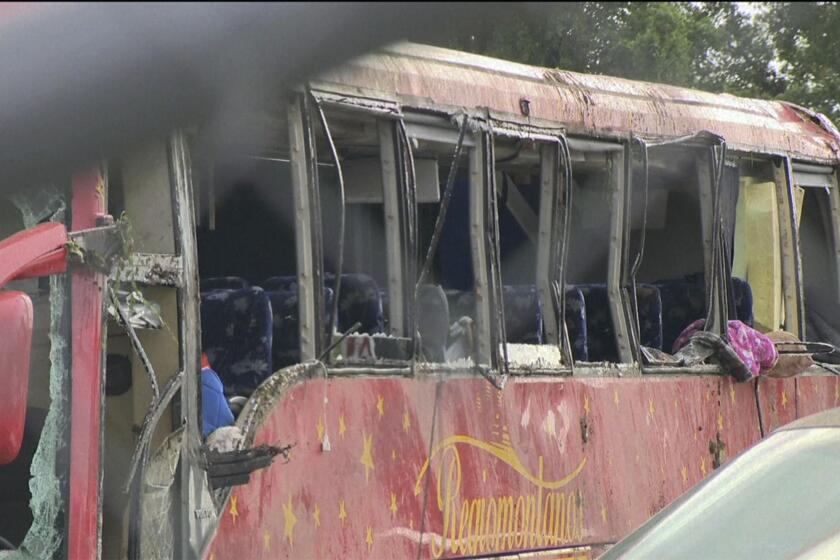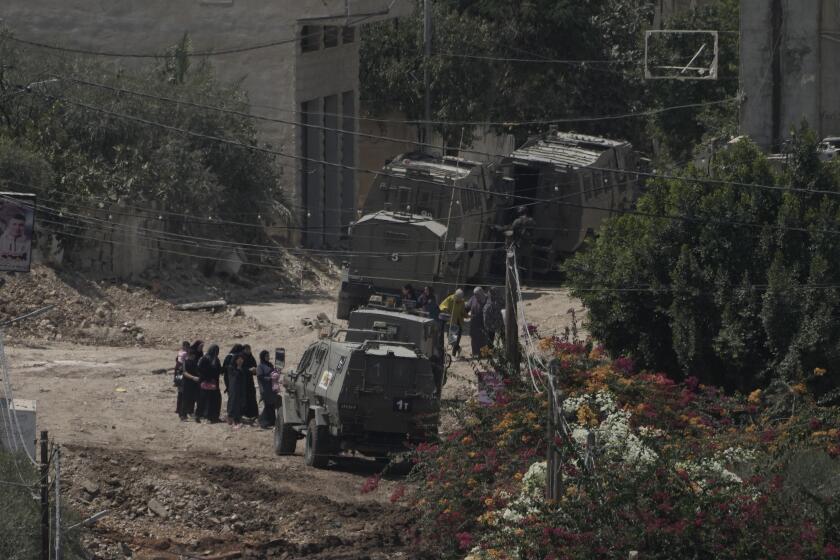Daily Military Briefings: A Mixture of Substance and Smoke : Media: The sessions are part news update, part propaganda, part verbal combat and part war college. They are as integral to Desert Storm as air sorties and border skirmishes.
The U.S. Marine combat officer walked up to the now-familiar podium at the Joint Information Bureau here and pulled a slip of paper from the pocket of his desert fatigues. Giving background before the televised daily war briefing sent live around the world, he wanted to note a line from a book that is mandatory reading for all Marine officers these days, “On War” by Carl von Clausewitz:
“A great part of the information obtained in war is contradictory, a still greater part is false and by far the greatest part is of doubtful character.”
Begin the next briefing, please.
It seems safe to say that no war in history has been so closely monitored by so many people across such long distances. Thanks to daily war briefings--sometimes up to five of them in 24 hours--millions of Americans, Britons, French, Saudis and others are engaged and fascinated by these briefings that are part news update, part propaganda, part verbal combat and part war college.
Who hasn’t been charmed by the easy warmth of Group Capt. Niall Irving, the lantern-jawed daily briefer for the British? Who fails to understand the crack of “command presence” after watching Gen. H. Norman Schwarzkopf take control of a briefing? Who doesn’t now know of Scuds and cluster bombs and the F-117A? Who hasn’t wondered what bombing videos are not shown on that monitor screen?
And who hasn’t struggled along with the corps of journalists in pondering exactly what questions one should ask when one’s country is engaged at that very moment in war?
“Sir! Could you tell us something that will lower the troops’ morale?” shouted the comedian on a “Saturday Night Live” parody of the briefing--a television show that, thanks to instant electronic linkups, was shown in the Hyatt Hotel briefing room here, live, between actual war briefings by Defense Secretary Dick Cheney and British Foreign Secretary Douglas Hurd.
Reporters here got the joke as well as everyone else, and laughed at themselves.
It seems safe to say that there has never been a show like these briefings.
As the war reaches nearly a month in duration, the briefings have grown from a rather casual daily account of battle for accredited journalists to an elaborate high-tech drama geared for an audience back home in the United States or Britain or any number of other countries. The briefings are now a formal part of the war routine that consumes vast military energy and the keen attention of everyone from privates to four-star generals.
Indeed, they are almost as integral to the war effort now as the thousands of air sorties and border skirmishes they describe.
“The difference,” says one lumbering infantry officer with a grin, “is that no one is dying at the briefings. Yet.”
In the last big war, many military PR specialists have argued, it was not the sandal-footed Communists who drove the United States out of Saigon. It was the loss of U.S. military credibility and then support at home.
With that in mind, today there are two answers to the question, “How are you doing?”
One answer depends on the battlefield in the KTO, or Kuwaiti theater of operations. The other is determined by the briefing in the HTO, the Hyatt theater of operations.
And no one should discount the importance of the latter in comparison with the former.
The U.S. military has quite openly struggled through a string of briefers, looking for someone with the right mix of high rank, warrior fearsomeness and public relations polish. And when military credibility was first called into question at a briefing after about 2 1/2 weeks of war, Gen. Schwarzkopf responded the next day by personally shaking up the way briefings are conducted.
Washington, he knew, was watching the progress of the war not just through his classified reports but also right there on television and in the newspapers.
Schwarzkopf added a non-televised background session to the daily briefings. The idea was to reduce the formality and provide an easier atmosphere for give-and-take, maybe taking a little of the edge off the daily military-press encounters.
There is no belief that the information is necessarily any better at these briefings, but some think it gets closer to the bone on the best of days. Information from the backgrounder can be easily spotted in the news because of its attribution to an anonymous “senior military official,” a position that rotates among command-level officers.
In one background session, the anonymous Marine combat officer at the start of this story was appealing to reporters for understanding. Some of the information from the battlefield is contradictory, or imprecise, often fluid. In the cliche of the age, “the fog of war.”
But the officer also, unintentionally, raised what remains a gnawing doubt about a war in which so much of the hard information passes through public relations specialists at controlled briefings before a captive audience. How much is the military using its prerogative of secrecy for nothing more than old-fashioned public relations?
Take precision bombing.
Videotape of combat encounters comes out of the aircraft-gun cameras after every sortie. It is analyzed by intelligence officers, and a small, select portion of it is passed on through the public relations machinery to illustrate the precision accuracy and success of coalition air forces.
So far, U.S., British and French briefers have all shown these video “hits” from time to time and made copies for broadcasters to use.
Every video has shown a smashing success, a bridge down, a key building blasted, an oil-field manifold blown to pieces. Schwarzkopf, it is recalled, showed a driver passing through the cross hairs of a bomb sight just moments before the bomb destroyed a bridge. “The luckiest man” around, he said.
The French also showed laser-guided bombing videos but went a step further and showed the destruction of an air base hangar just after a car or truck raced inside, presumably for shelter. Observers quickly entitled the driver the “unluckiest man in Kuwait.”
Both bolstered the “precision” image sought by the military. But no videos have been shown of bombs that were mistakenly dropped on civilians, even as news accounts cleared by Iraqi military censors in Baghdad show suffering women and children.
And likewise there have been no aircraft-gun videos of bombs and rockets that miss targets altogether and land harmlessly in the sand or water. Yet there must be many, considering that after weeks of bombing army and Republican Guard positions in Kuwait and southern Iraq, an estimated 80% of Iraqi armor and artillery remains serviceable, by the American military’s own estimate.
At a minimum, the videos tend to make destruction of Iraqi military targets seem so artificially easy.
“Quite right, that’s a problem,” Group Capt. Irving says.
It seems safe to conclude that Von Clausewitz, the 19th-Century Prussian strategist, and the Marine officers who study him would say, well, we told you so.
More to Read
Sign up for Essential California
The most important California stories and recommendations in your inbox every morning.
You may occasionally receive promotional content from the Los Angeles Times.






